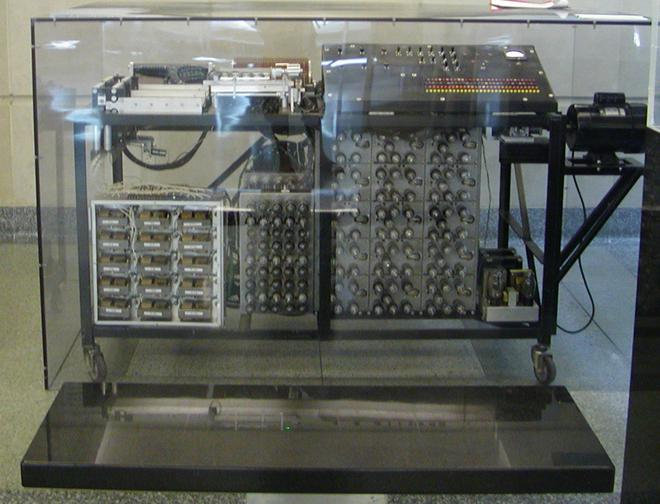Questions:
1. ENIAC was the world’s first programmable, electronic, digital computer. It was dedicated to the University of Pennsylvania on February 15, 1946. What does ENIAC stand for?
2. During the Second World War, the University’s Moore School of Engineering hired more than 200 women as _________. Six of them were assigned to program ENIAC to perform calculations that would determine the trajectories of ballistic missiles. Fill in the blank.
3. The first program ENIAC ran, through December 1945 and January 1946, was to check whether a _____________ weapon would work. It determined that a scheme proposed by Edward Teller wouldn’t, so Teller and Stanislaw Ulam came up with the popular staged design. Fill in the blank.
4. ENIAC’s work on the answer to Q3 inspired Ulam and John von Neumann to use the computer to calculate the distances neutrons can travel through different materials using X methods. This problem had previously required large groups of people to perform a large number of calculations, and the computer’s success with these methods was pivotal to establishing X’s usefulness in science. Name X.
5. At least five programming languages were designed to run problems on ENIAC. Name the programmer who built the fourth, called ARC Assembly. Among other achievements, she coauthored the book ‘Coding for A.R.C.’ with her husband; the book contained the world’s first assembly code.
Visual:

In a landmark 1973 case, a district court in the U.S. invalidated the 1964 patent for ENIAC and ruled that its design was derived from the device shown above. Name the device.
Answers:
1. Electronic Numerical Integrator and Computer
2. Computers
3. Thermonuclear
4. Monte Carlo
5. Kathleen Booth
Visual: Atanasoff-Berry computer
!["[T]he First and Fifth Amendments Require ICE to Provide Information About the Whereabouts of a Detained Person"](https://images.inkl.com/s3/publisher/cover/212/reason-cover.png?w=600)






